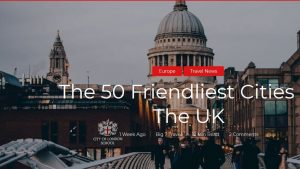After over a year of social distancing, having a strong network of social and professional contacts has never been more important: it helped us battle with isolation, but also served as an important avenue for inspiration. Read on to find out how to develop valuable relationships and why it matters for both your summer semester and your future career.

Networking: a two-way communication model in practice
The core purpose of networking is focused on information exchange, gaining understanding, and creating long-term relationships that are mutually beneficial.
For PR practitioners, whether they engage in lobbying, media relations, international or community relations, having strong networking channels is essential to achieve their goals. For PR students gearing up for their dissertations, networking is of paramount importance when it comes to primary data collection, particularly when your methodology choice calls for qualitative interviews.
But remember, networking is based on two-way exchange based on reciprocity. In other words, and as social theory of exchange proposes, people keep score and any interaction, particularly in the business world, must be balanced out by an exchange of social rewards.
For example, you approach a PR expert for an interview. They give you information while you display respect and acknowledge their contribution formally in your work. If you’re both satisfied with this exchange of rewards, the relationship might continue and develop, offering more opportunities for rewards exchange in the future.
In semester 3, there’ll be a session dedicated to the process of approaching experts for interviews. For now, let’s see which networking channels will be useful both for your research project and the future careers.
Where to find them? Look up their networking channels
There are numerous international bodies gathering PR big wigs whom you can meet both online and offline:
Global Alliance – a PR association gathering over 300,000 practitioners and academics from around the world to unify and promote the standards of the profession globally and you already know the former Chair of Global Alliance – Prof. Anne Gregory. Find them on Facebook, Twitter and LinkedIn and join the conversation.
Many of their sessions are streamed by other associations, for example, last month’s discussion about “Digital Transformation and The Jobs of The Future” was streamed by ASEAN PR YouTube Network.
ASEAN Public Relations Network (APRN) – a member of Global Alliance, APRN’s mission is “to bridge the gap of Public Relations professionals’ competencies in the ASEAN region:” Brunei, Cambodia, Indonesia, Laos, Malaysia, Myanmar, the Philippines, Singapore, Thailand, and Vietnam. Brunei and Singapore are among the top five wealthiest countries in the world while Vietnam was one of the few that recorded a GDP growth in 2020 and, in the pre-pandemic times, its government opened a tourism office in London with the aim of attracting British visitors – something to think about.
You’ll all be familiar with the CIPR, the only PR organisation in the world that administers Chartered Assessment – that is, an award of formal credential in recognition of their highest standards or professional practice. Many international PR associations draw on training and knowledge promoted by the CIPR and there are two key online channels that are a great avenue of connecting with like-minded individuals: CIPR’s main Twitter account and CIPR International. Recently, the latter was promoting a webinar about Tik Tok and generation Z – why not join the conversation and offer views from your perspective?
Once restrictions get lifted, every local branch of the CIPR – including CIPR North East – will be hosting networking events: what’s a better way of meeting people from the area of your interest?
Among several other bodies in the UK, it’s worth pursuing contacts within the Public Relations Communications Association (PRCA). Historically, it was established as a trade association for larger consultancies, but currently both CIPR and PRCA are considered as very similar and there’s nothing to stop you from expanding your network across both organisations!
China International Public Relations Association (CIPRA) is mainly focussed on the development of PR research and practice as well as establishing the industry’s professional standards. Recently, CIPRA held the 8th China University Student Public Relations Planning and Entrepreneurship Competition – check who the speakers and judges were as those contacts will definitely be useful to connect with.
There are many (MANY) international, national, and regional PR associations – way too many to include in this blog entry. The International PR Association, however, compiled a list of 90 organisations from across the globe – all at your fingertips.
Other PR pros habitats
Most agencies and publications have established some sort of an online community – see PRovoke, PR Daily or Spin Sucks or PRWeek to name just a few, and follow the authors of posts across social media platforms. After a while, you’ll start recognising their names (e.g. Ella Minty – make sure you check out her weekly #PowerAndInfluence discussions on Twitter; Richard Bailey or Scott Guthrie) at international events and in specialist coverage and other publications concerning PR.
Last but not least, Stephen Waddington’s Lockdown: a marketing, media and PR community of practice is a lively and friendly group that gathers 1.8K top industry experts, partitioners, academics and students who engage in an ongoing discussion about communication. “Please pull up a chair and join the conversation,” their Facebook page says.
Why network?
Networking, aside from having a potential to lead to more business or employment, can be an invaluable source of inspiration and aspiration. Exchanging ideas with likeminded people, will help you figure out and reassess what you really know and what your areas of development might be. Even a single conversation can inspire you to follow an area of specialism that will unleash your creative talent.
Taking part in events and voicing your thoughts, whether in an online or offline environment, will also make you quickly stand out and can help you foster your career path. This is a simple equation: the more people you know, they more people you know! And the more high-profile individuals you connect with, the more support you may receive for your future development. With time, this will lead to you becoming a high-status person with powerful connections. Think about your self-confidence at this stage!
Start SMART-ly and always show interest
Networking can seem daunting at first, but you can overcome the initial stage fright by making a plan and starting with small steps. For example, you may decide on reading one blog entry a week and commenting it on the author’s platform. Or you can choose to attend one event a month and introduce yourself to the organisers – all you need to do is thank them for hosting it at first; make sure you’re prepared to introduce yourself in a few sentences.
Whatever your main goal for networking is – whether it’s learning, seeking mentorship, career opportunities or just meeting like-minded people – always remain polite and show interest. Most of PR professionals are incredibly kind and generous with their time, but no one likes being taken for granted. Keep your two-way symmetrical communicators hat on and watch your network expand.









